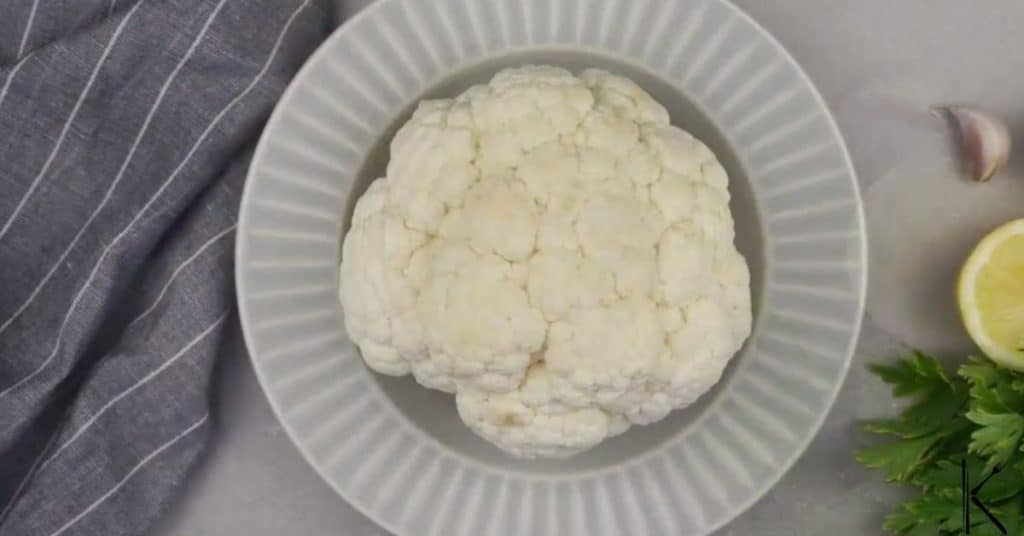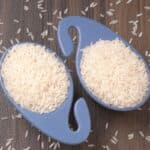In short, yes, you can freeze fresh cauliflower to preserve it and avoid waste. To maintain its texture, blanch the cauliflower before freezing, and use it in cooked dishes after thawing.
Cauliflower can be eaten raw or cooked and prepared in a variety of different ways.
Various cauliflower recipes allow it to adopt a slightly different taste profile and texture, from purees and crunchy snacks, to cauliflower rice, salad, curry, or battered and deep-fried florets.
Cauliflower does not have a very long shelf life, but the good news is that you can preserve cauliflower in the freezer for 8 months. You will need to take a little extra care to prepare the cauliflower for freezing to ensure it remains well-preserved.
Below is a step-by-step guide to successfully freeze cauliflower.
Can Cauliflower Be Frozen?
Yes, you can freeze fresh cauliflower. Cauliflower has a crunchy texture that softens on cooking. Freezing cauliflower is a good way to preserve it, avoid waste, and it makes for convenient last-minute meal preparation.
Like most vegetables, cauliflower does require some preparation before freezing to prevent a soggy texture once thawed.
As a fresh vegetable, cauliflower naturally contains ripening enzymes that continue to function while frozen. The ripening enzymes eventually cause the fresh vegetables to spoil if you don’t blanch the cauliflower before freezing.
Another factor affecting the texture of the cauliflower on freezing is the formation of ice crystals. Ice crystals damage the cell walls of the cauliflower resulting in softer, less crisp florets once thawed. Cauliflower is a pretty hardy vegetable and if prepared correctly will last for 8 months in the freezer at excellent quality.
For the best results use frozen cauliflower only in cooked dishes since the texture won’t be quite as crisp once thawed. This makes it unappetizing in salads.
How To Blanch and Freeze Cauliflower
Always freeze cauliflower when it is still fresh. If the cauliflower is nearing its expiry, it will not freeze well.
Step 1: Wash
Remove the green outer leaves of the fresh cauliflower and wash the head thoroughly to remove any sand or garden bugs hiding between the florets.
For thorough cleaning, soak the cauliflower in saltwater. Fill a bowl with water and add one to 2 tablespoons of salt. Stir to dissolve. Leave the cauliflower in the water for a few minutes and rinse.
Step 2: Cut
Remove any damaged or brown florets and cut away the bottom hard stem of the whole cauliflower head with a sharp knife. Now, separate the florets from each other and cut the them into smaller pieces removing them from the head.
Step 3: Blanch
Boil a large pot of water on the stovetop. While the water is heating up, fill a separate large bowl with ice water. The blanching time will depend on the floret size.
The larger size cauliflower florets will take longer to blanch, so if you cut big chunks, add them into the pot of boiling water first.
After they have cooked for one minute, add the medium size florets to the hot water. After another minute, add the smallest pieces and boil for only 60 more seconds. If you cook the cauliflower for too long, it will become soft and mushy on thawing.
Immediately remove the cauliflower with a slotted spoon and place it into the ice bath to stop the cooking process.
Step 4: Dry
Once cold, drain the blanched cauliflower from the bowl of ice water. Dry it with a clean towel to remove water droplets and extra moisture.
Step 5: Flash Freeze
Spread the cauliflower florets out in a single layer on a baking sheet and place them in the freezer. To keep them from sticking as they freeze, it’s best to line the baking sheet with parchment paper first.
Only freeze cauliflower florets uncovered for an hour (or just long enough to freeze completely). The flash freeze method prevents the cauliflower from sticking together when packaged.
Step 6: Pack
Transfer the frozen florets from the baking sheet into resealable freezer bags. Press out as much air as possible before sealing. The more air or moisture around the cauliflower, the greater chance there is of freezer burn developing and textural damage.
If you don’t have heavy duty freezer bags, you can also use a freezer safe container.
Step 7: Label and Freeze
Write the date of freezing on the bag so you know how long the cauliflower has been frozen.
How To Thaw Frozen Cauliflower
Since frozen cauliflower is best used in cooked dishes, there is no need to thaw your frozen veggies. You can take the cauliflower straight out of the freezer and add it to the dish you are cooking.
There has already been some textural breakdown during the blanching process and freezing. This means the frozen cauliflower won’t require a long cooking time.
If you do want to defrost cauliflower, the best way is to place it in the fridge overnight to thaw.
Types of Cauliflower
Generally available as a white vegetable with green outer leaves, cauliflower is a wonderfully versatile vegetable. The leaves are edible but are often removed with only the head of cauliflower being used in meals. Cauliflower also comes in orange, green, and purple varieties.
Cauliflower can be boiled, steamed, roasted, pickled, grilled, and eaten raw. It is often added to curries, stews, and casseroles, served as a side dish with cheese sauce, incorporated into a salad, or served raw with a dip.
Cauliflower can also be turned into a rice replacement by finely chopping or pulsing the florets to look like grains of rice. The vegetable has also gained popularity as a gluten-free flour substitute to make pizza bases.
FAQs
Conclusion
Freezing cauliflower will save time, food waste, and essentially money. Flash freezing cauliflower before packaging prevents the florets from clumping together and allows you to remove only as much as you need from the freezer at a time.
There are so many ways to cook cauliflower and endless healthy recipes to spruce up this vegetable. Whether used in a quiche, casserole, pie, soup, side dish, or transformed into a pizza base, frozen cauliflower can be incorporated and cooked in many different and delicious ways.
See more: Can You Freeze Broccoli?









